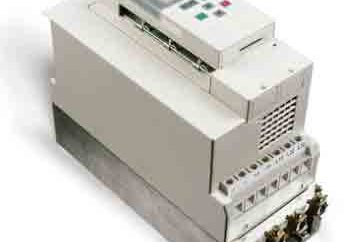Emergency Communications Are Often Overlooked
Nov 1, 2017

Readers Platform outlines cost-effective ways to improve vital safety system.
Over the summer, we were all shocked by the headline, “Elderly man found dead in elevator after he called for help and no one came” (CNN, August 11, 2017). This was shocking not only because of the tragic ending, but even more so because it was completely avoidable.
Some may think a video system would have been the answer, but installing cameras isn’t enough, because if no one is watching, help still can’t be sent. This was the case in another incident, a number of years ago, in which a man was trapped for 41 hours in an elevator equipped with cameras. Because the phone was not working, and the cameras were not monitored, by accident he only managed to free himself unharmed (aside from severe dehydration).
“Not only is it not normal to be unable to communicate to passengers in an elevator, it’s also against code in most regions,” said Scott Knutsen, chief technology officer of Cobra I-Logiq Security. “Unfortunately, every day, people get stuck in elevators for hours on end, unsure if anyone has heard their cry for help, because building owners have neglected to install the appropriate communications equipment in the elevator.”
Adoption of Technology and Code
There is always a lag between technology and its reflection in industry codes, and its subsequent enactment in municipal codes and national bylaws. This delay creates a natural tension between the providers of technology, the providers of a service and customers, who must ultimately pay and ask themselves, “Why is this not good enough? It’s been this way for years.” Knutsen explained:
“As elevator technology has evolved from in-person manual operators, to the installation of emergency call buttons followed by physical phones and now cameras, there is a clear pattern that we can always do better when it comes to safety of passengers. We need to not treat emergency communications like a neglected child and ignore it. If left uncared for, the results could be catastrophic.”
The time has come for people to rethink what an elevator is. No longer should it be seen as just a box that moves up and down; it is a complex transportation system that comes with hardware, software, and analog and digital systems. To prevent incidents such as last summer’s fatal entrapment, elevator manufacturers need to integrate safety systems, lifting systems and communications systems into one reliable and indivisible system.
International Building Code
The latest ASME A17.1/CSA B44 prescribes that each elevator phone be checked every 24 hours for any offline status.
Though code requirements for elevator communication systems have changed in the 21st century to improve safety, the new International Building Code of 2018 is leaning toward recommending more communication channels in the cab. This includes things like requiring cameras to be installed so first responders can see what is going on. Communication upgrades that once sounded like a good idea may eventually become mandatory.
In the aviation industry, a commercial plane would be grounded immediately if the communications systems were not functional, and elevator consultants have begun taking a similar stance. More of them are specifying, and even having discussions for the new 2018 International Building Code, that if life safety systems are not functional, the cab should automatically be blocked from moving.
“Some people think using the grandfather clause excuse will let them scoot under the new codes to save a few bucks,” said Alex Arapoglou, account executive, Webb Electronics. “The question is, is saving the cost today the best and safest solution in the long term?” While there is a cost to upgrading, when you factor in the possible costs that result from loss of life and the litigation that could follow, an upgrade becomes the cheapest solution. It only needs to happen once. The question to ask ourselves is, do we want to risk it?
Simultaneous Entrapments
Most systems currently in use are analog and use the same copper wire used in obsolete rotary telephone technology. Analog is fine if the elevator phone works according to code, and it is reliable and clear. Anyone who has been caught in a multiple-car entrapment scenario has experienced being put in a call queue. This might not be too bad if you have two to three elevator cabs, but when you consider systems that have five or more, it can become quite unnerving for the people trapped.
Earlier this year, 34 cabs in a busy commercial building stopped in Toronto when a generator failed to start during a citywide noontime power failure. With an average call time of 2-3 minutes per call, trapped passengers were faced with being on hold and stuck for some time before help was on its way.
Fire Rescue and First Responders
Another issue that arises is when the fire department arrives onsite and must triage the situation. Currently, they must run around recalling elevators, hoping to find the one with the most serious situation. If the shafts are filled with smoke, it can be a matter of seconds between life and death. Therefore, providing responders with the proper information immediately is crucial. An incident illustrating this point occurred in February. Two employees at a resort had to be treated for smoke inhalation after an elevator motor overheated and filled the shaft with smoke. While the two employees survived, the situation could have been far more serious if first responders were blindly trying to decide which elevator cab was the most important.
Convergence of Safety and Marketing
Developers, property managers and architects often entertain and market to passengers during short trips up or down in their elevators via digital media monitors in the cab. These offer a great way to provide information or promote the building, events and activities to clients or customers, and present an opportunity to highlight safety systems. These can now become two-way audio/video devices. It has been scientifically proven that two-way audio/video dramatically reduces victims’ stress level more than audio alone.
Installing WiFi connectivity into elevator cabs as an access point offers another opportunity to blend communications with safety. The elevator shaft is essentially a concrete bunker that blocks signal reception. In hospitals, installing WiFi in cabs enables medical staff to remain in contact, whether they experience an emergency in the cab with a patient, or if they need to respond to an emergency on another floor. Webb Electronics has emergency communication systems that don’t require additional cable drops and simply use an existing phone line multiplexed digitally. If we consider what just dropping cables in one elevator shaft costs (conservatively, between US$5,000 and US$10,000), upgrades can become a financial concern. To put it in more concrete terms, on a high rise with 20 cabs, it could cost US$200,000 just to drop cables. This does not include emergency communication devices, cameras, screens, and so on. And, because elevators move, wiring tends to become an issue, especially when it comes to adding fiber optics.
21st-Century Emergency Communications
As an example, the illustration above shows that there are systems that drive all the emergency communications, the cameras, the access controls, the data and other components through the same twisted, shielded pair that links the elevator cabs to the machine rooms. Voice Over Internet Protocol (VoIP) solutions bring safety and flexibility to elevator systems. With VoIP, you can:
- Monitor your phone system every 90 seconds, instead of over a 24-hour cycle. (This is used to meet fire-code requirements.)
- Make/receive simultaneous calls to/from the cabs to the monitoring stations. This provides immediate response to the victim of an entrapment, whose call would otherwise be in a queue. You are now limited only by the number of staff on hand to answer.
- Do group calling in the cabs
- Set call logs and reports, and system-wide status reports
- Provide two-way audio/video
- Have position indicators on the screens
- Create customized interfaces
- Transfer calls to softphone apps that allow computers and other devices to act as telephones (giving security guards mobility), and include WiFi capabilities
- Remotely access and troubleshoot elevator problems
Conclusion
As much as we don’t want to think about it and hold our breath in hopes of situations not happening, they sometimes do. In that case, why not change your elevator communications systems to something more effective, while using the new communication tools to generate revenue or spread information? With 21st-century digital technology, the problems of the past can go away, while saving the client money and reducing the chance of unnoticed entrapments. Building emergency communications need to be seen not just as a “phone,” but rather a life safety, security and communication solution that is essential in this modern digital world. Over the past five years, we’ve seen an exponential increase in mixed-use developments. Many span a few blocks and utilize completely different systems. Because of this, developers and owners are looking to centralize their systems to limit costly redundancies. This is where the industry is going, and this is where the emergency-communications challenges are going to be.
Get more of Elevator World. Sign up for our free e-newsletter.







